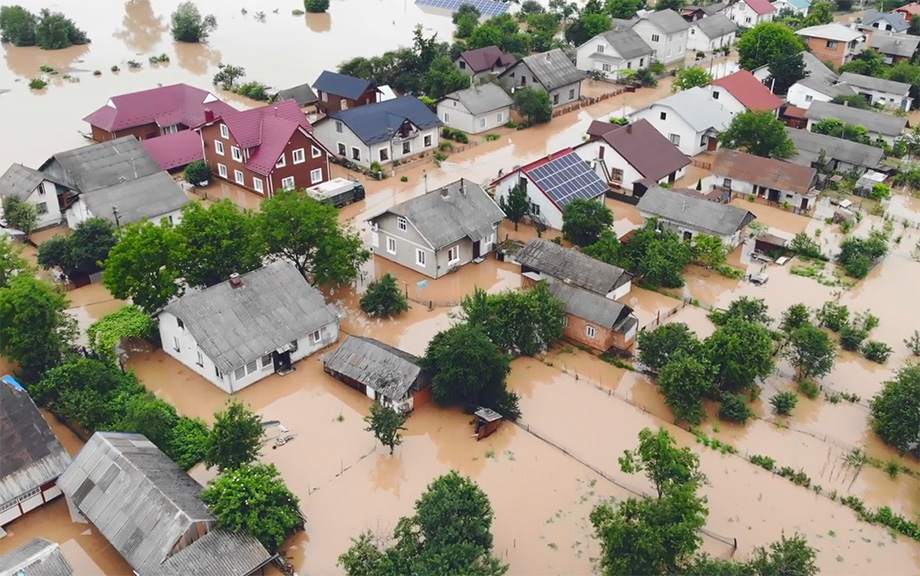The Dueling Intraday Demands on Reserves

A central use of reserves held at Federal Reserve Banks (FRBs) is for the settlement of interbank obligations. These obligations are substantial—the average daily total reserves used on two main settlement systems, Fedwire Funds and Fedwire Securities, exceeds $6.5 trillion. The total amount of reserves needed to efficiently settle these obligations is an active area of debate, especially as the Federal Reserve’s current quantitative tightening (QT) policy seeks to drain reserves from the financial system. To better understand the use of reserves, in this post we examine the intraday flows of reserves over Fedwire Funds and Fedwire Securities and show that the mechanics of each settlement system result in starkly different intraday demands on reserves and differing sensitivities of those intraday demands to the total amount of reserves in the financial system.
Are Nonbank Financial Institutions Systemic?

Recent events have heightened awareness of systemic risk stemming from nonbank financial sectors. For example, during the COVID-19 pandemic, liquidity demand from nonbank financial entities caused a “dash for cash” in financial markets that required government support. In this post, we provide a quantitative assessment of systemic risk in the nonbank sectors. Even though these sectors have heterogeneous business models, ranging from insurance to trading and asset management, we find that their systemic risk has common variation, and this commonality has increased over time. Moreover, nonbank sectors tend to become more systemic when banking sector systemic risk increases.
Flood Risk Outside Flood Zones — A Look at Mortgage Lending in Risky Areas

In support of the National Flood Insurance Program (NFIP), the Federal Emergency Management Agency (FEMA) creates flood maps that indicate areas with high flood risk, where mortgage applicants must buy flood insurance. The effects of flood insurance mandates were discussed in detail in a prior blog series. In 2021 alone, more than $200 billion worth of mortgages were originated in areas covered by a flood map. However, these maps are discrete, whereas the underlying flood risk may be continuous, and they are sometimes outdated. As a result, official flood maps may not fully capture the true flood risk an area faces. In this post, we make use of unique property-level mortgage data and find that in 2021, mortgages worth over $600 billion were originated in areas with high flood risk but no flood map. We examine what types of lenders are aware of this “unmapped” flood risk and how they adjust their lending practices. We find that—on average—lenders are more reluctant to lend in these unmapped yet risky regions. Those that do, such as nonbanks, are more aggressive at securitizing and selling off risky loans.
End‑of‑Month Liquidity in the Treasury Market

Trading activity in benchmark U.S. Treasury securities now concentrates on the last trading day of the month. Moreover, this stepped-up activity is associated with lower transaction costs, as shown by a smaller price impact of trades. We conjecture that increased turn-of-month portfolio rebalancing by passive investment funds that manage relative to fixed-income indices helps explain these patterns.
AI and the Labor Market: Will Firms Hire, Fire, or Retrain?

The rapid rise in Artificial Intelligence (AI) has the potential to dramatically change the labor market, and indeed possibly even the nature of work itself. However, how firms are adjusting their workforces to accommodate this emerging technology is not yet clear. Our August regional business surveys asked manufacturing and service firms special topical questions about their use of AI, and how it is changing their workforces. Most firms that report expected AI use in the next six months plan to retrain their workforces, with far fewer reporting adjustments to planned headcounts.
Can Professional Forecasters Predict Uncertain Times?

Economic surveys are very popular these days and for a good reason. They tell us how the folks being surveyed—professional forecasters, households, firm managers—feel about the economy. So, for instance, the New York Fed’s Survey of Consumer Expectations (SCE) website displays an inflation uncertainty measure that tells us households are more uncertain about inflation than they were pre-COVID, but a bit less than they were a few months ago. The Philadelphia Fed’s Survey of Professional Forecasters (SPF) tells us that forecasters believed last May that there was a lower risk of negative 2024 real GDP growth than there was last February. The question addressed in this post is: Does this information actually have any predictive content? Specifically, I will focus on the SPF and ask: When professional forecasters indicate that their uncertainty about future output or inflation is higher, does that mean that output or inflation is actually becoming more uncertain, in the sense that the SPF will have a harder time predicting these variables?
Are Professional Forecasters Overconfident?

The post-COVID years have not been kind to professional forecasters, whether from the private sector or policy institutions: their forecast errors for both output growth and inflation have increased dramatically relative to pre-COVID (see Figure 1 in this paper). In this two-post series we ask: First, are forecasters aware of their own fallibility? That is, when they provide measures of the uncertainty around their forecasts, are such measures on average in line with the size of the prediction errors they make? Second, can forecasters predict uncertain times? That is, does their own assessment of uncertainty change on par with changes in their forecasting ability? As we will see, the answer to both questions sheds light of whether forecasters are rational. And the answer to both questions is “no” for horizons longer than one year but is perhaps surprisingly “yes” for shorter-run forecasts.
The Disparate Outcomes of Bank‑ and Nonbank‑Financed Private Credit Expansions

Long-run trends in increased access to credit are thought to improve real activity. However, “rapid” credit expansions do not always end well and have been shown in the academic literature to predict adverse real outcomes such as lower GDP growth and an increased likelihood of crises. Given these financial stability considerations associated with rapid credit expansions, being able to distinguish in real time “good booms” from “bad booms” is of crucial interest for policymakers. While the recent literature has focused on understanding how the composition of borrowers helps distinguish good and bad booms, in this post we investigate how the composition of lending during a credit expansion matters for subsequent real outcomes.
An Update on the Reservation Wages in the SCE Labor Market Survey

The Federal Reserve Bank of New York’s July 2024 SCE Labor Market Survey shows a year-over-year increase in the average reservation wage—the lowest wage respondents would be willing to accept for a new job—to $81,147, but a decline from a series’ high of $81,822 in March 2024. In this post, we investigate how the recent dynamics of reservation wages differed across individuals and how reservation wages are related to individuals’ expectations about their future labor market movements.
Reallocating Liquidity to Resolve a Crisis

Shortly after the collapse of Silicon Valley Bank (SVB) in March 2023, a consortium of eleven large U.S. financial institutions deposited $30 billion into First Republic Bank to bolster its liquidity and assuage panic among uninsured depositors. In the end, however, First Republic Bank did not survive, raising the question of whether a reallocation of liquidity among financial institutions can ever reduce the need for central bank balance sheet expansion in the fight against bank runs. We explore this question in this post, based on a recent working paper.










 RSS Feed
RSS Feed Follow Liberty Street Economics
Follow Liberty Street Economics